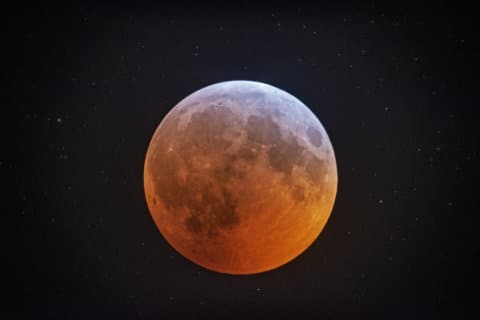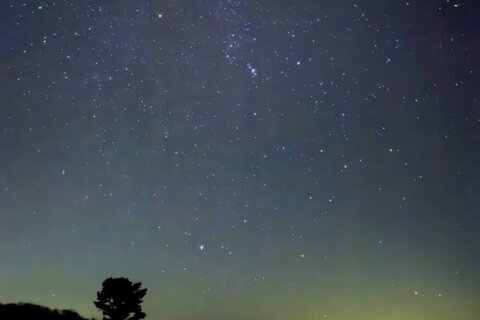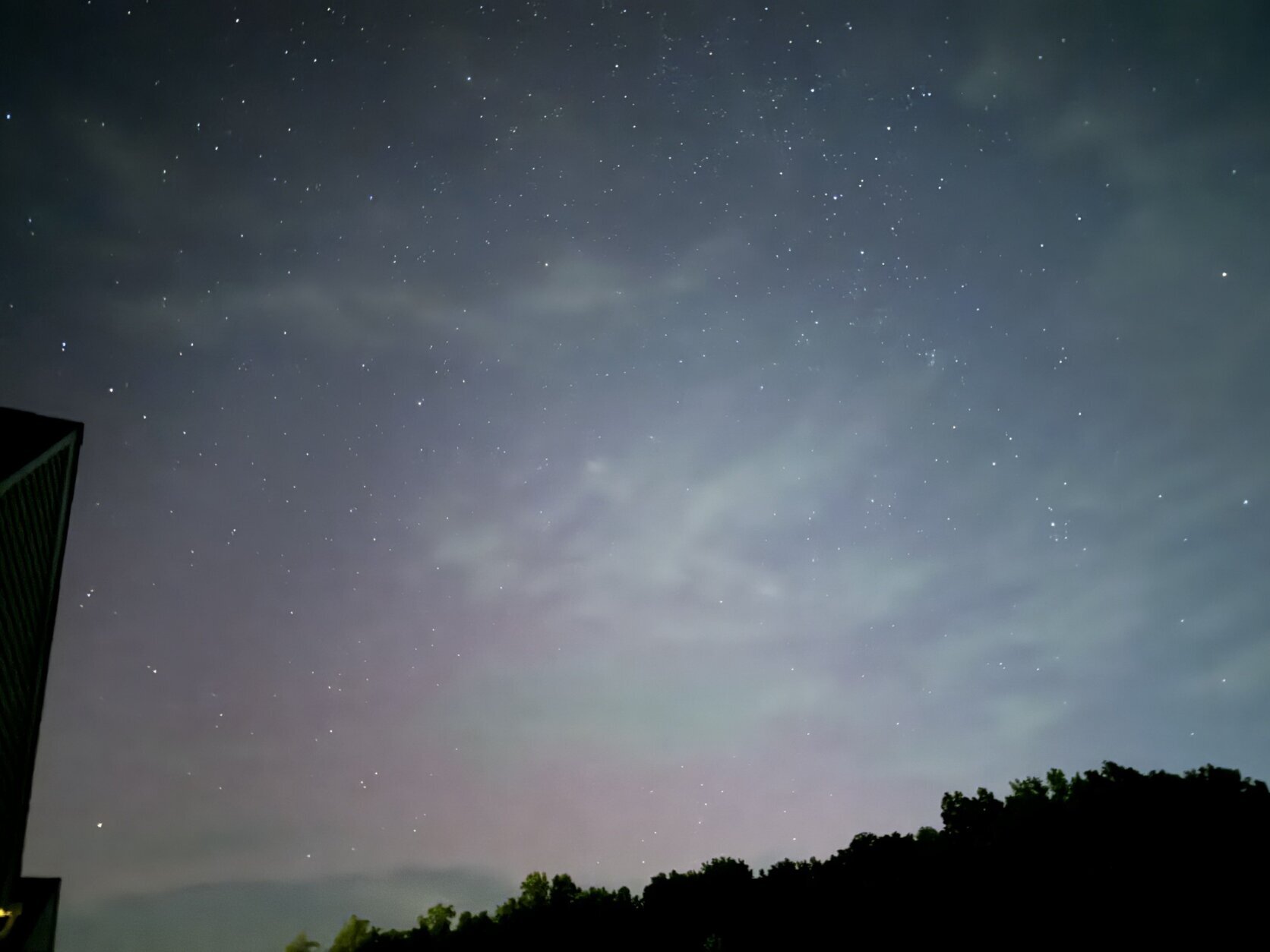
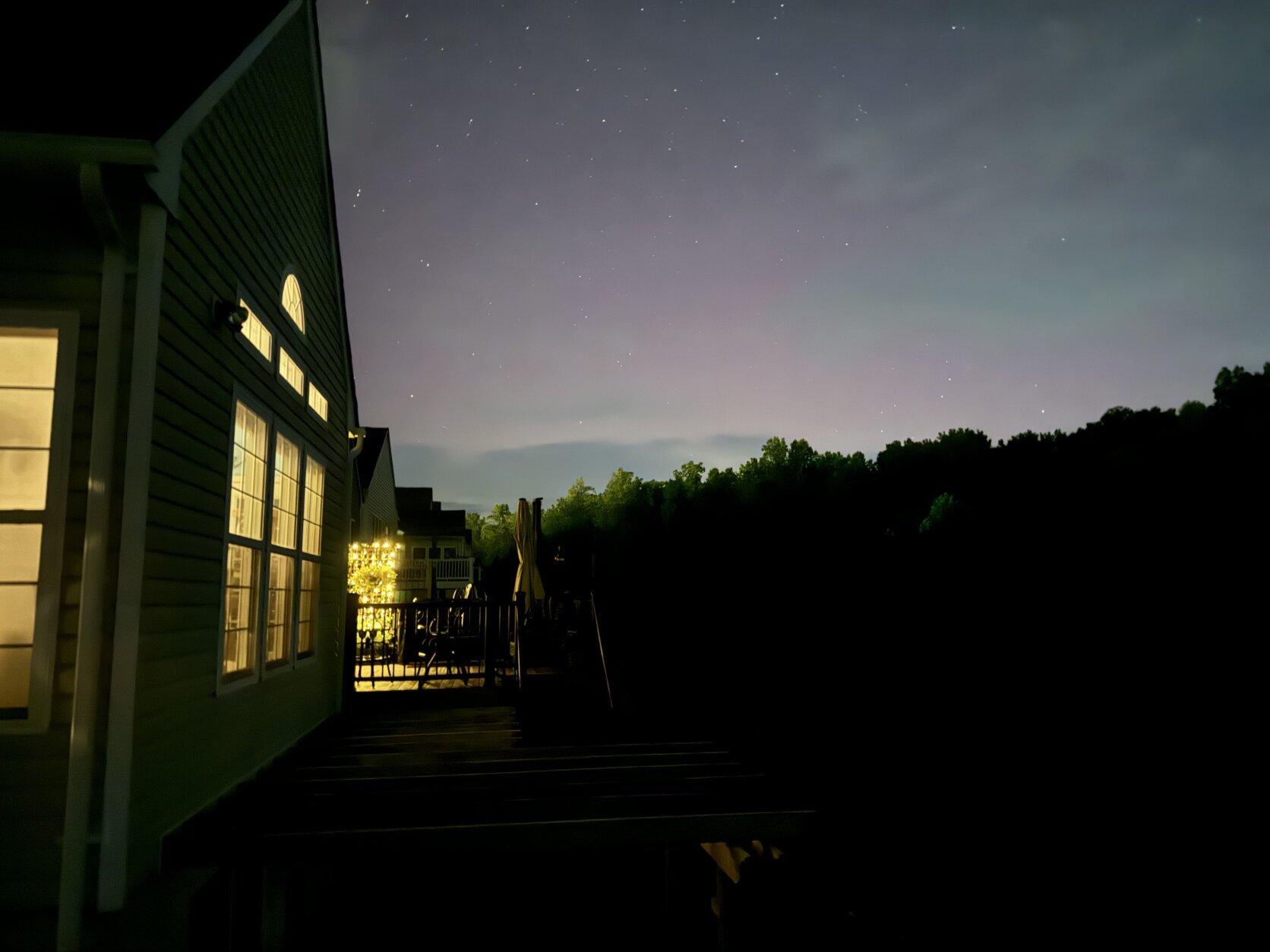
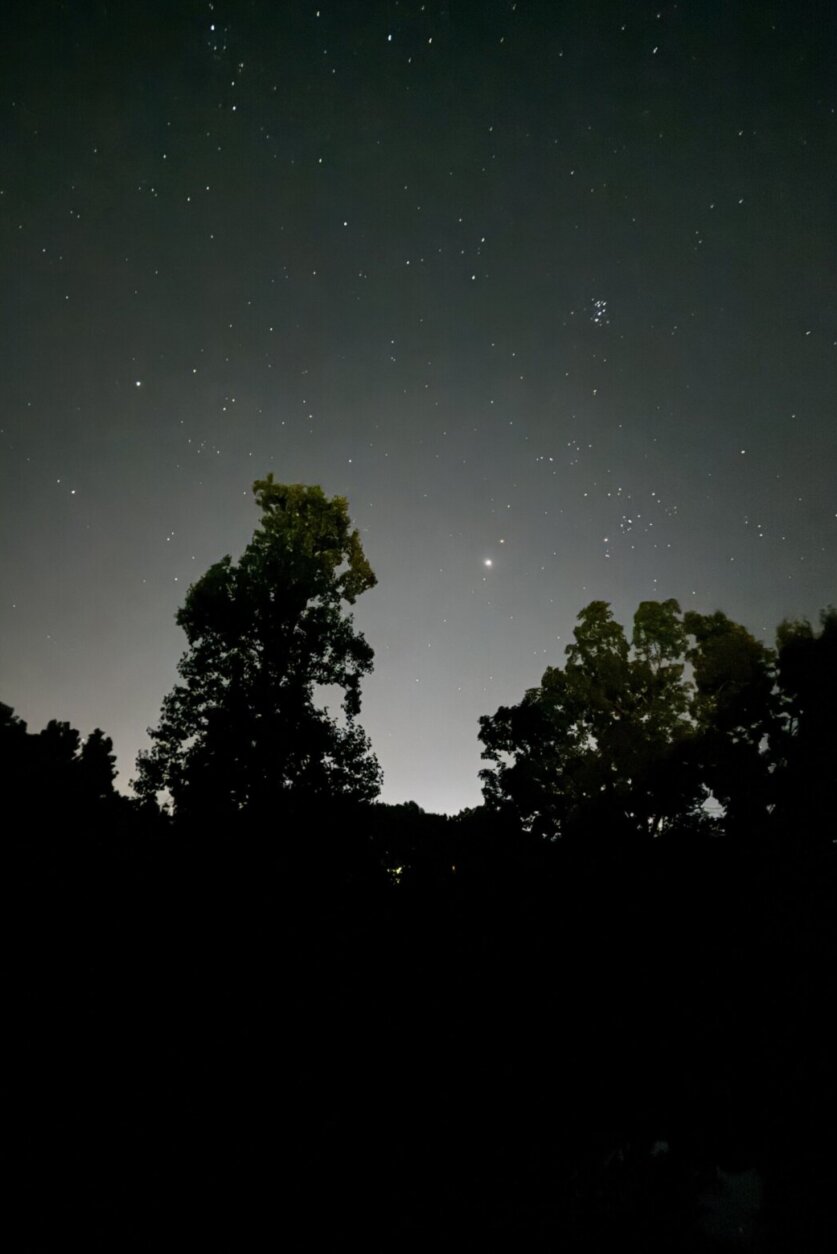
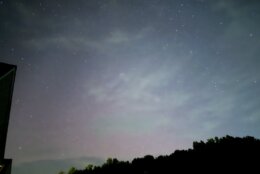
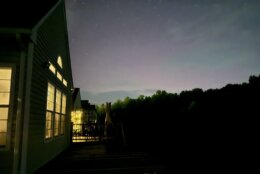
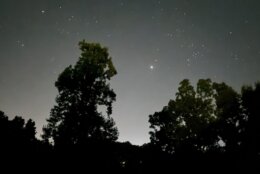
Sunday night into early Monday morning turned out to be a skywatcher’s joy as the annual Perseid meteor shower was accompanied by stunning aurora seen through partial cloud cover.
And we may have a repeat sky show Monday night.
Shenandoah National Park had many stargazers parked along Skyline Drive, especially at Big Meadows for the Sunday Night Star Party hosted by Delaware North and the Charlottesville Astronomical Society. It was a far cry, however, from the thousands who showed up last year.
I was at the park’s Skyland Conference Center for my “Let’s Talk About Space” presentation about the famed Mount Wilson Observatory and had standing room only with about 100 people. We also went outside to stargaze through partly cloudy skies and saw several beautiful, bright Perseids that wowed everybody. The clouds parted just enough for us to see the Milky Way overhead.
I couldn’t spend the night as family members were visiting. As is my nightly custom before turning in, I checked the skies. Through partial cloud cover, I used my smartphone to take exposures of 10 seconds of the northern horizon. Lo and behold, aurora!
I could not see it with my unaided eye but it was easily visible in the smartphone. Observers posted beautiful pictures on X that were taken in Shenandoah National Park and elsewhere in Virginia.
Observers were able to see the aurora because a key indicator, Geomagnetic K-index of 7 (G3), had been reached at 1:25 a.m. Monday, as determined by the National Oceanic And Atmospheric Administration Space Weather Prediction Center.
SWPC just issued the following, “ALERT: Geomagnetic K-index of 8 (G4),” at 10:48 a.m. Monday, which was not in its three-day forecast. How conditions develop for the rest of the day will determine the chances for seeing aurora Monday night. Monitor WTOP’s weather page for sky conditions and the SWPC, EarthSky.org, space.com for updates.
It will be worth taking a look to the north from a dark sky site with a clear horizon. You might be able to detect some color in the sky if aurora is present, but it would likely be low on the northern horizon. Wide field binoculars will help your search.
Use a camera or smartphone that can take exposures of several seconds — including using “Night Sky” or “Low Light” settings if your camera has them — of the northern horizon. Steady the camera or use a tripod for best image results. The camera may capture aurora your eyes did not.
The timing of the Perseids’ peak, which was 10 a.m., gives us another night, Monday into Tuesday, to possibly see a good number of meteors.
The Perseids can produce bright meteors called fireballs — meteors brighter than the planet Venus. Even living in the city and suburbs allows skywatchers to see these brighter meteors.
As I write this, the D.C.-area skies are forecast as partly cloudy. As long as the sky is not totally clouded out, it is worth watching the Perseids.
Start watching the sky at 11 p.m., especially the hours before dawn. The best place to watch the Perseids is somewhere free of city lights that offers a clear view of the whole sky, such as Shenandoah National Park. Being comfortable is key to watching the shower.
Try your luck at photographing the Perseids. It is very easy to do with minimal equipment and experience. Share your Perseid pics with us on X and Facebook.
If you are up at 2 a.m. or before it gets light before dawn watching for Perseids, it will be well worth your while the next several mornings to see the impressive grouping of Mars and Jupiter in the eastern sky. They will be at their closest in the early morning hours Wednesday — less than a finger-width at arms length. That is close!
Binoculars will improve the view and your smartphone with or without zoom can easily image them among the stars and constellations of the sky.
The sky never disappoints …
Follow Greg Redfern on Facebook, X and his daily blog to keep up with the latest news in astronomy and space exploration.
Get breaking news and daily headlines delivered to your email inbox by signing up here.
© 2024 WTOP. All Rights Reserved. This website is not intended for users located within the European Economic Area.

